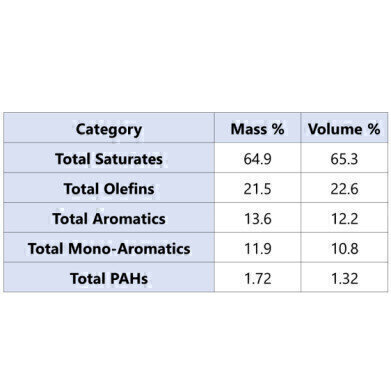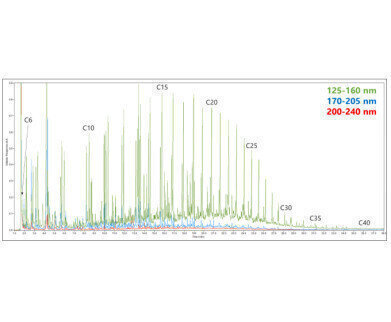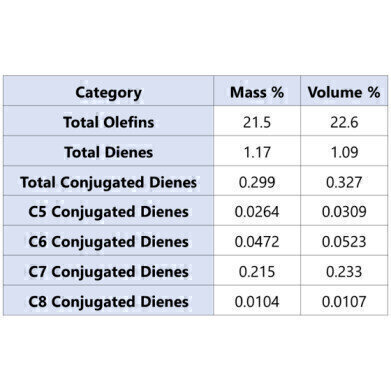-
 Table 2. An example of more detailed results that can be extracted from our spectral data.
Table 2. An example of more detailed results that can be extracted from our spectral data. -
 Figure 1. The chromatograms for recycled plastics samples have more defined peaks than diesel chromatograms and sometimes even distinct patterns, such as a linear alpha olefin eluting before every n-alkane.
Figure 1. The chromatograms for recycled plastics samples have more defined peaks than diesel chromatograms and sometimes even distinct patterns, such as a linear alpha olefin eluting before every n-alkane.
Analytical instrumentation
New Application Sneak Peak – Recycled Plastics Analysis
Dec 08 2020
It has been shown time and time again that the VUV Analyzer™ Platform works really well for analyzing hydrocarbons. Carbon range doesn’t seem to matter either; there are methods for both gasoline and jet fuel, with a diesel method on the way. So when asked if we could analyze recycled plastics feedstocks, we decided to try it out. The results did not disappoint!
Let’s acquire some data!
Sample preparation is easy enough. We first dissolve 100-500 µL or mg (depending on whether the sample is an oil or a wax) of sample in 5 mL carbon disulfide. The solution is then passed through a 0.45 µm filter and evaporated down to 0.5-1 mL.
We then inject the sample in a hot split inlet (325°C, split 10-100:1) onto a high-temperature non-polar column. Because these samples are so heavy, we will eventually try injecting on a PTV inlet to see if it helps get the heavier compounds on column more easily. Since the oven ramps to 400°C, we use the VGA-101 at 425°C because we always want our VGA to be hotter than our maximum oven temperature.
What can our data tell us?
Figure 1 shows the chromatogram from a pyrolysis oil. From samples run thus far, the oils don’t typically exceed carbon numbers C40-45, whereas the waxes can exceed C65. Again, because we are using a split inlet for sample injection, we are likely not getting many heavier compounds on the column very well.
Unlike the chromatograms we see in middle distillate samples, these chromatograms have much more defined peaks. This allows us to identify olefins more easily and confidently, which we aren’t concerned to do with jet and diesel fuels. This is key because recycled plastics samples seem to have a significant portion of olefins.
Since we are just looking to do a high-level compositional analysis, the quantitative results are straightforward. Table 1 contains the results for the chromatogram in Figure 1; olefins and aromatics will likely be the two most relevant data points for many. However, as we learn more about these types of samples, we can extract more details out of the data. For instance, when analyzing the sample in Figure 1, the dienes (at least in the gasoline range) could be extracted from the total olefins. We could even pull out the conjugated dienes by carbon number (Table 2)!
Stay tuned for more from VUV Analytics about recycled plastics feedstocks analysis on the VUV Analyzer Platform.
Digital Edition
PIN 26.1 Feb/Mar 2025
March 2025
Analytical Instrumentation - Elemental Analysis for Quality and Process Control at Refineries, for Lubricants and Wear Metals in Engine Oils - Synthetic Lubricants: New Developments - Scaling...
View all digital editions
Events
Apr 14 2025 Moscow, Russia
Apr 15 2025 Moscow, Russia
Apr 22 2025 Hammamet, Tunisia
Apr 22 2025 Kintex, South Korea
Solar & Energy Storage Summit 2025
Apr 23 2025 Denver, CO, USA




.jpg)

















